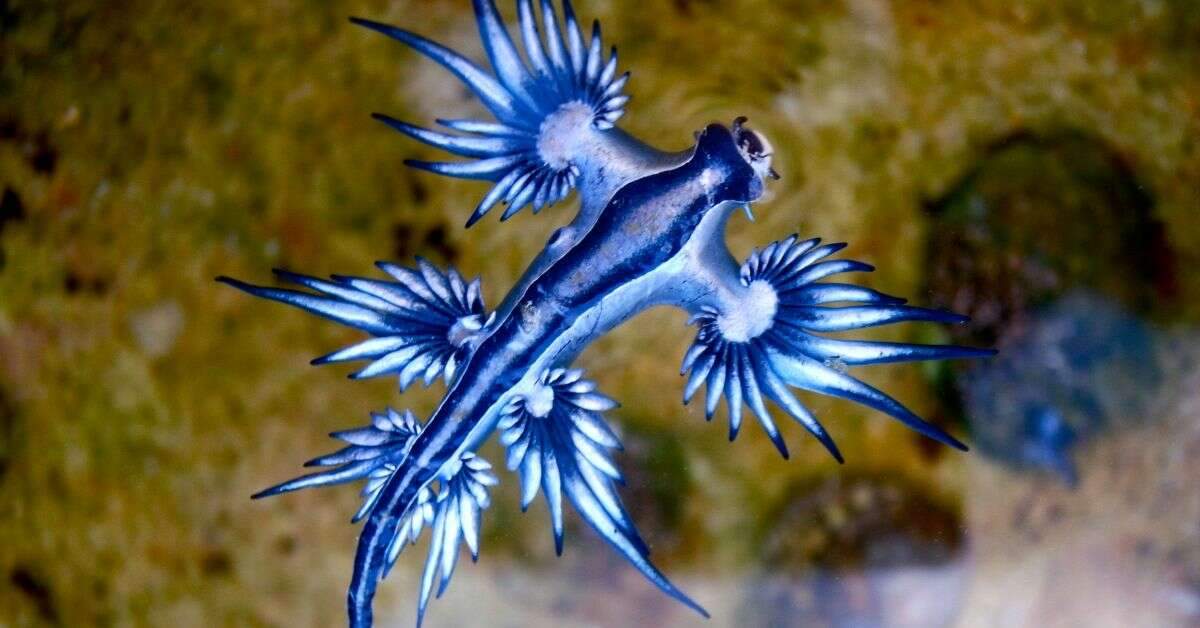There is nothing quite like spending time on the serene beaches of Visakhapatnam. These captivating shores are ideal destinations for both tourists and locals. Their rich flora and fauna, which never cease to amaze, make them much more than just a peaceful retreat. As beautiful and fascinating as they are, a few creatures on the beaches of Visakhapatnam can also be harmful and lethal when they feel threatened. Let’s take a look at a few stunning yet dangerous species that have been spotted along the city’s picturesque coastlines.
1. Purple Stinger Jellyfish

Purple Stinger Jellyfish, also known as Mauve Stinger, or Pelagia Noctiluca, is a venomous species of jellyfish. Its sting can be painful and cause different degrees of illnesses such as diarrhoea, vomiting and anaphylactic shock. These jellyfish look like purple-coloured balloons floating in water. These creatures were spotted on different beaches of Visakhapatnam including RK Beach and Rushikonda.
2. Portuguese Man O’ War

The Portuguese Man O’ War is another alluring yet dangerous creature found near the waters of Visakhapatnam. Often mistaken for a jellyfish, this marine species is actually a colony of organisms working together.
The creature’s translucent blue and purple body may look beautiful floating on the water’s surface, but its long, trailing tentacles carry a powerful sting. Making contact with these tentacles can result in severe pain, welts, and even paralysis in extreme cases.
3. Blue Buttons

Blue Buttons, often spotted along the shores of Visakhapatnam, are small, disk-shaped marine organisms that resemble the Portuguese Man O’ War but are far less dangerous.
While they are generally harmless to humans, their tiny tentacles can still cause mild irritation or stinging if touched.
4. Blue Sea Dragons
 Blue Sea Dragons, or Glaucilla Marginata, feed on Blue Buttons and Portuguese Man O’ War and store their venom for further use. These venomous cells, if touched, can lead to allergic reactions including nausea, vomiting and darkening of the skin.
Blue Sea Dragons, or Glaucilla Marginata, feed on Blue Buttons and Portuguese Man O’ War and store their venom for further use. These venomous cells, if touched, can lead to allergic reactions including nausea, vomiting and darkening of the skin.
These little lizard-like creatures use their feet to float on the water, and can lure beachgoers. However, if you come across this one, it’s better to keep your distance!
5. Hydrophis Sea Snake
 Hydrophis Sea Snake is a highly venomous snake compared to other poisonous snake species. One of them was spotted by fishermen at Sagar Nagar in 2023. However, these species are rarely seen as they live in the deep sea, and they don’t usually bite.
Hydrophis Sea Snake is a highly venomous snake compared to other poisonous snake species. One of them was spotted by fishermen at Sagar Nagar in 2023. However, these species are rarely seen as they live in the deep sea, and they don’t usually bite.
6. Scorpionfish

Scorpionfish lurk near the rocks and blend seamlessly with their surroundings by camouflaged their bodies, making them difficult to spot.
What makes Scorpionfish especially dangerous are their venomous spines, which they uses as a defence mechanism upon feeling threatened.
A sting from these creatures can cause extreme pain, swelling, and in some cases, more serious complications.
7. Yellow Jellyfish
 Scuba divers near Rushikonda spotted Yellow Jellyfish during a training session in 2021. Compared to most other marine species, these creatures thrive in conditions like warm and polluted waters. Though their sting is typically milder than their more dangerous relatives, it is always advisable to not go near them.
Scuba divers near Rushikonda spotted Yellow Jellyfish during a training session in 2021. Compared to most other marine species, these creatures thrive in conditions like warm and polluted waters. Though their sting is typically milder than their more dangerous relatives, it is always advisable to not go near them.
These creatures, found on the beaches of Visakhapatnam are venomous, and can be lethal sometimes. It is advised to leave them undisturbed to avoid harm. So, the next time when you visit the beach, watch out for these creatures!
If you come across one, observe it from a safe distance and reach out to the East Coast Conservation Team at 099013 28731 for rescue and rehabilitation assistance. The organization also conducts Marine Life Walks, which can be a great way to learn more about the marine species found along Vizag’s coastline.
Disclaimer: Most of the above spottings, apart from that of the Sea Snake are based on reports from East Coast Conservation Team.
Also read- 4 species of dolphins that visit Vizag’s shores and where to spot them!
Stay tuned to Yo! Vizag website and Instagram for more interesting updates.










Discussion about this post